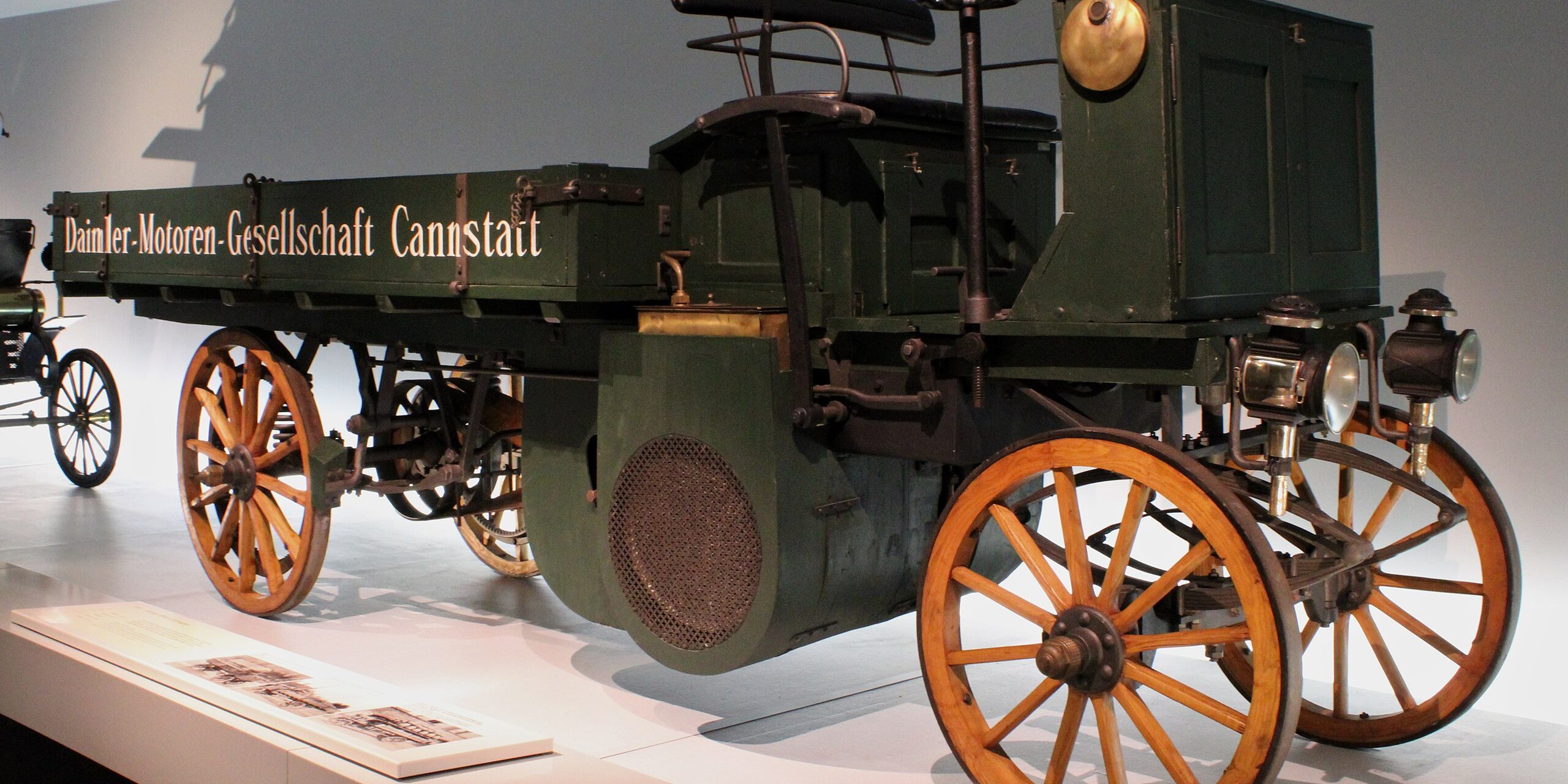Do you love lorries as much as we do? If you do, then you may be interested to learn some of these historical facts about lorries – a bonus for the history lovers out there, too! We’ve listed our top five facts down below for you.
1. The first lorry was invented in Germany
In 1896, German automotive pioneer, Daimler, converted a horse-drawn goods wagon into what is considered the world’s first ever lorry by adding a four-horsepower two-litre cylinder engine at the rear that originated from a car. The engine was linked to the rear axle by means of a belt and was protected with two helical springs, whilst the front axle was steered from the driving seat by a chain.
The lorry could carry a load of up to 1.5 tonnes.
2. ‘Lorry’ was first seen in English in 1838
According to the Oxford English Dictionary, the etymology of the word is obscure, but thought to be related to the dialect verb ‘lurry’, which meant to lug or drag along. ‘Lurry’ dates as far back as the 17th century, while the first use of ‘lorry’ was seen in 1838 when referring to the luggage truck on a train.
As for the earliest recorded reference to a ‘lorry driver’, this was almost a century later in 1926.
3. Lorries began to be fitted with diesel engines in the 1920s and 1930s
Previously, lorries had been powered by gasoline engines, though diesel engines were then favoured since they were more efficient and powerful, making them even more useful for long-distance transportation. Commercial vehicle fleets, such as lorries, were the first to see the use of diesel engines in the UK, with diesel engines for passenger vehicles becoming more popular later on.
4. The exhaust emissions of one lorry in 1988 is equal to 60 of today’s lorries
That’s right, it would take 60 of the world’s modern lorries to produce the same amount of exhaust emissions as just one lorry from only 35 years ago. Their fuel economy is also much more efficient today, with a 28% improvement in mpg whilst managing 20% more payload compared to lorries 20 years ago.
This may improve further in the future with the electric revolution taking over the world of vehicles and transport.
5. During World War I, lorries played a crucial role.
Lorries were used throughout WWI for transporting troops, supplies, and equipment. The British army, for example, had over 50,000 lorries in service by the end of the war. During the Second World War, over another 50,000 lorries were built for use by the British Armed Forces, known as the Bedford QL, of which there were seven variants.
Transcare
Do you have a number of lorries making up your fleet of vehicles? If so, then visit us here at Transcare to undertake lorry servicing as part of your efficient fleet maintenance. We offer a range of servicing and repair services and also have a DVLA authorised testing facility to ensure all your vehicles lorries are road-safe.
Get in touch with us today for more information.








